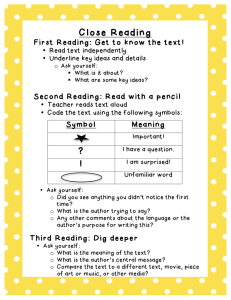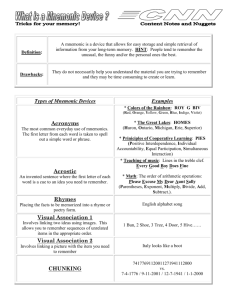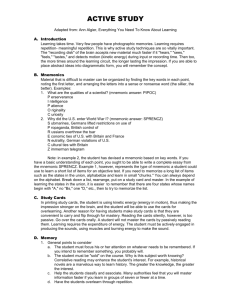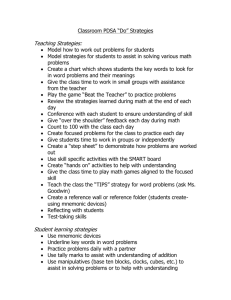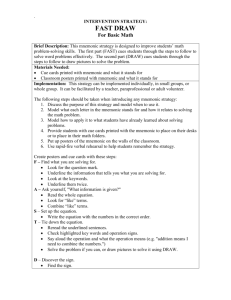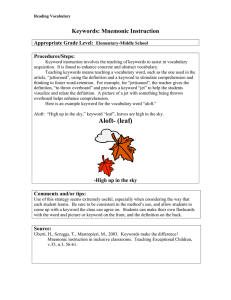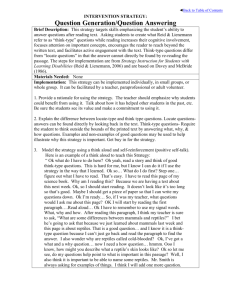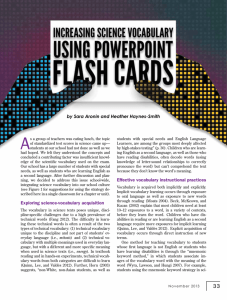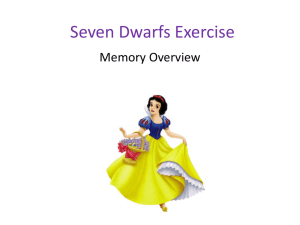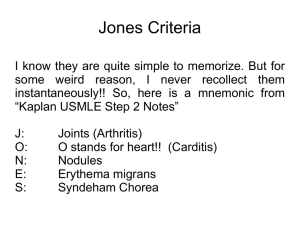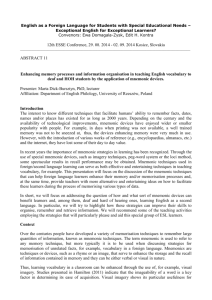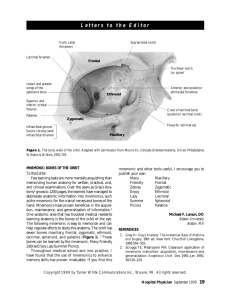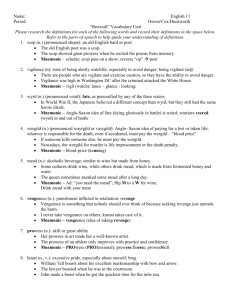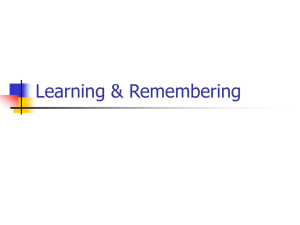Vocabulary - IF IT FITS
advertisement
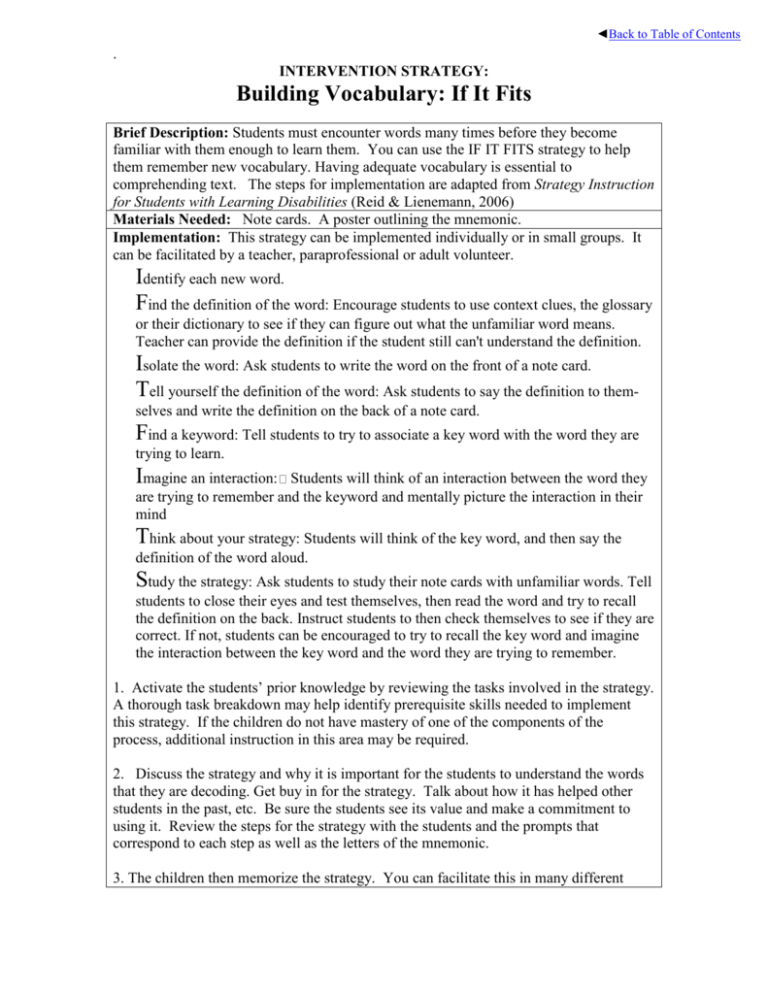
◄Back to Table of Contents . INTERVENTION STRATEGY: Building Vocabulary: If It Fits Brief Description: Students must encounter words many times before they become familiar with them enough to learn them. You can use the IF IT FITS strategy to help them remember new vocabulary. Having adequate vocabulary is essential to comprehending text. The steps for implementation are adapted from Strategy Instruction for Students with Learning Disabilities (Reid & Lienemann, 2006) Materials Needed: Note cards. A poster outlining the mnemonic. Implementation: This strategy can be implemented individually or in small groups. It can be facilitated by a teacher, paraprofessional or adult volunteer. Identify each new word. Find the definition of the word: Encourage students to use context clues, the glossary or their dictionary to see if they can figure out what the unfamiliar word means. Teacher can provide the definition if the student still can't understand the definition. Isolate the word: Ask students to write the word on the front of a note card. Tell yourself the definition of the word: Ask students to say the definition to themselves and write the definition on the back of a note card. Find a keyword: Tell students to try to associate a key word with the word they are trying to learn. Imagine an interaction: Students will think of an interaction between the word they are trying to remember and the keyword and mentally picture the interaction in their mind Think about your strategy: Students will think of the key word, and then say the definition of the word aloud. Study the strategy: Ask students to study their note cards with unfamiliar words. Tell students to close their eyes and test themselves, then read the word and try to recall the definition on the back. Instruct students to then check themselves to see if they are correct. If not, students can be encouraged to try to recall the key word and imagine the interaction between the key word and the word they are trying to remember. 1. Activate the students’ prior knowledge by reviewing the tasks involved in the strategy. A thorough task breakdown may help identify prerequisite skills needed to implement this strategy. If the children do not have mastery of one of the components of the process, additional instruction in this area may be required. 2. Discuss the strategy and why it is important for the students to understand the words that they are decoding. Get buy in for the strategy. Talk about how it has helped other students in the past, etc. Be sure the students see its value and make a commitment to using it. Review the steps for the strategy with the students and the prompts that correspond to each step as well as the letters of the mnemonic. 3. The children then memorize the strategy. You can facilitate this in many different ways. Scaffolding the instruction may be necessary during this phase. Ample practice and opportunities should be provided until the children can recite the steps. 4. Model the strategy using a think aloud and self-reinforcement (positive self-talk). Teacher will demonstrate the strategy to students to show them how to execute each step of the strategy. 5. Provide support for the strategy during implementation, through direct feedback during practice, verbal cuing, prompt cards, etc. 6. Eventually fade the teacher prompts until the children demonstrate the use of the strategy independently. Encourage other teachers to use the same strategy and post it in their classrooms as well. Schedule for implementation: The suggested intervention schedule is approximately 15 minutes daily. Progress monitoring may be done either weekly or biweekly. Research Summary & References: The following source may be consulted to learn the essentials and variations of this strategy: Learning Toolbox. Steppingstone Technology Grant, James Madison University, MSC 1903, Harrisonburg, VA 22807.
